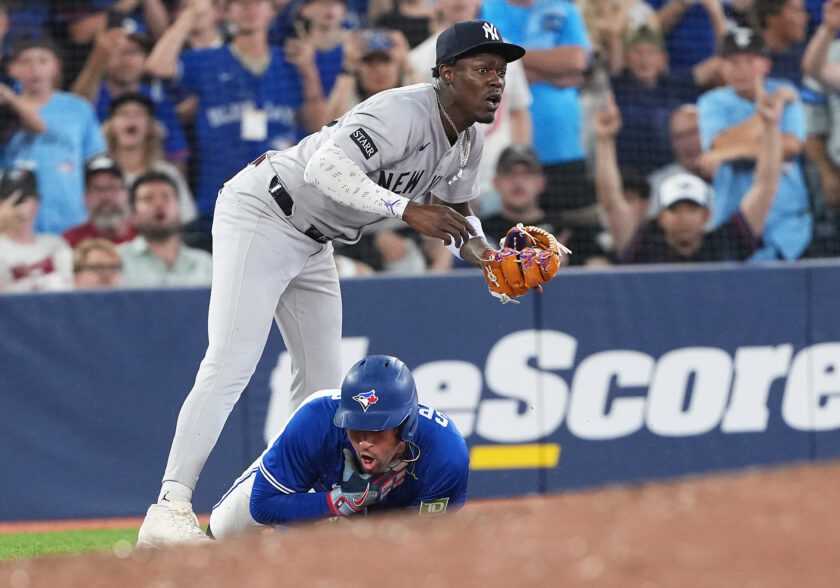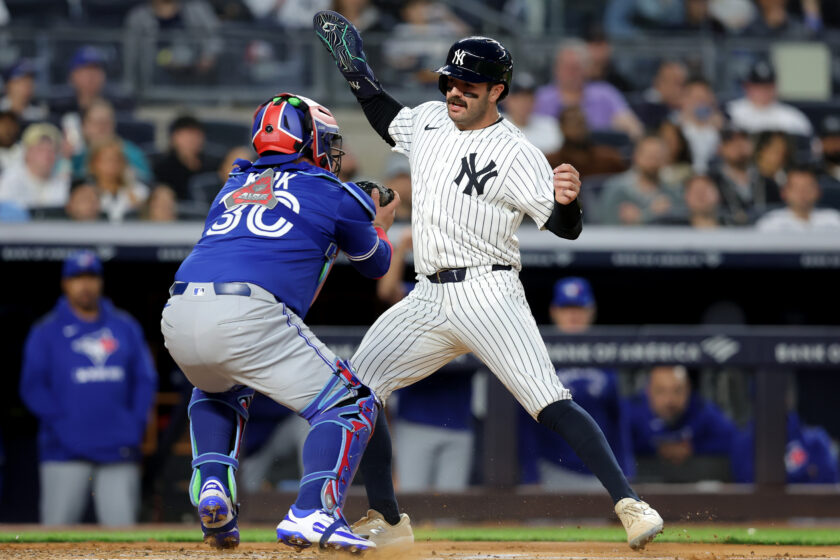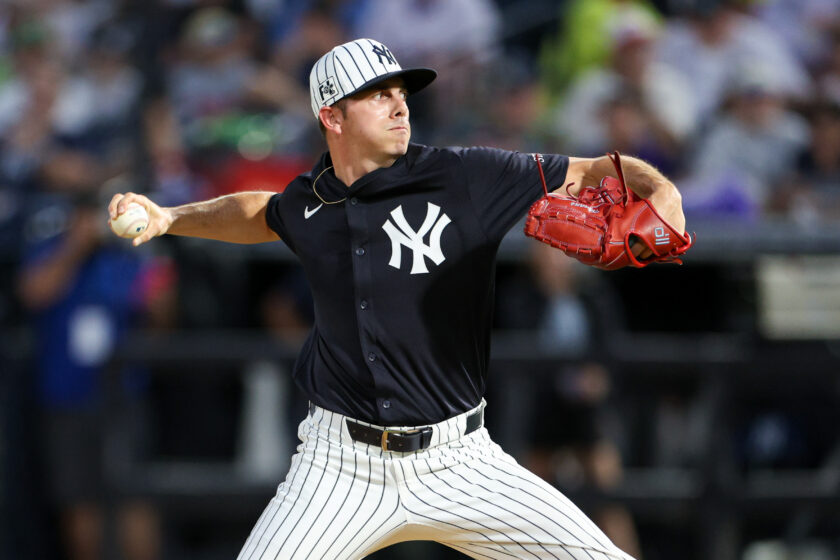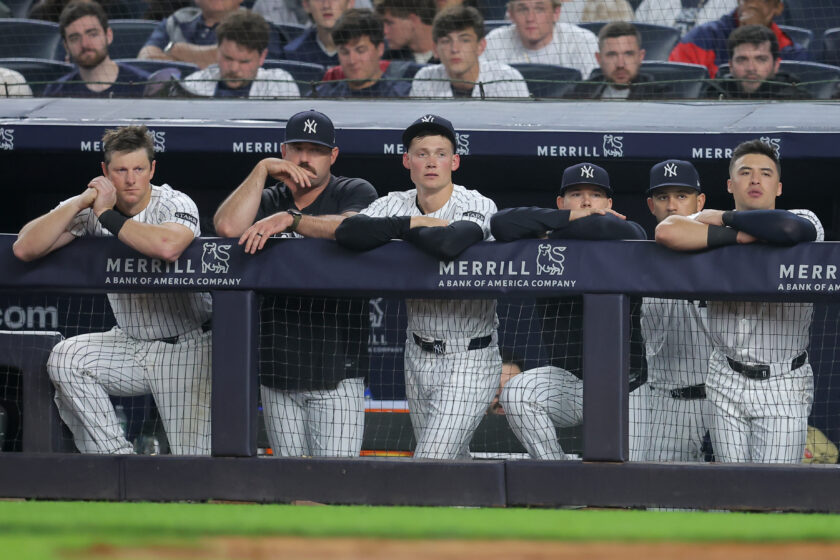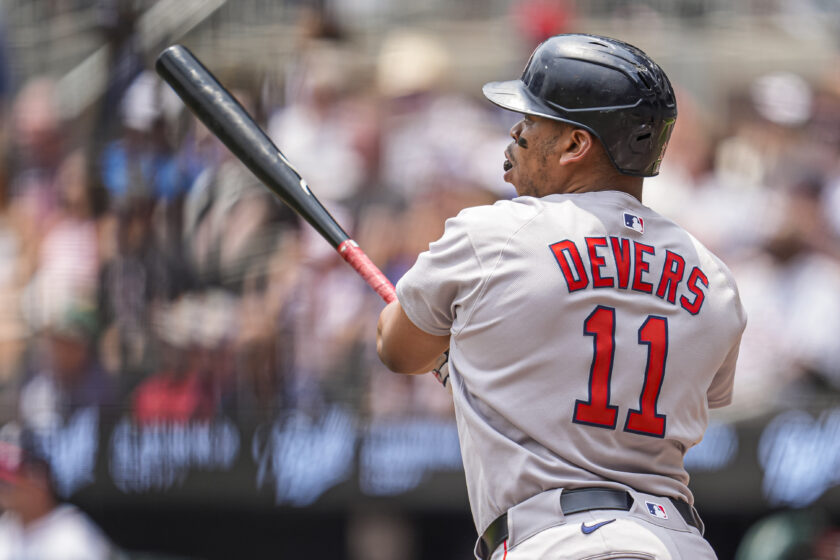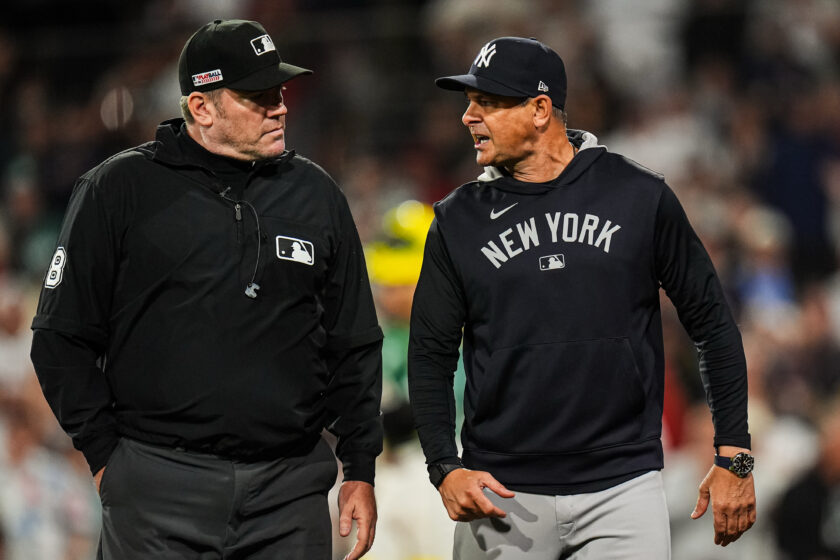Yankees’ Sean Casey hire is critical litmus test

The Yankees shocked everyone in firing hitting coach Dillon Lawson at the All-Star break. All the more shocking was hiring former Reds first baseman Sean Casey to succeed him.
And yet, in hiring Casey, the Yankees could be on the verge of changing baseball’s future. Firing Lawson was necessary and had to happen. If Casey succeeds, it could finally mean what thousands to perhaps millions of fans have craved for a long time.
Baseball’s Analytics Devolution could finally, at long last, be over.
This isn’t to say analytics are leaving baseball for good. They never will. There’s still plenty of utility to sabermetrics, Moneyball, whatever you want to call it, especially in pitching. Pitching coach Matt Blake never played and, like Lawson, was only a field coordinator before getting his current job. However, he understands the math and pitching language enough that he’s thrived in his role.
Lawson, on the other hand, was clearly all about the three true outcomes and nothing else. This is a great philosophy in developing younger hitters trying to elevate their game. Few hitting prospects enter the minors or even MLB with fully developed swings, let alone power.

But in the majors, we can now say it’s official. Teaching batters to simply hit over a shift and not use the whole field was awful for baseball. Juiced baseballs prettied up the game for a few years, but the owners quickly put a stop to that in the name of, surprise surprise, keeping salaries low.
Furthermore, this is now the fourth season in a row where pushing only for a walk, home run, or strikeout has crippled New York’s lineup. It’s the tale as old as time. One or both of Aaron Judge and Giancarlo Stanton goes down, and the entire lineup resorts to hero ball. Because why work an at-bat or build a lead when you can swing your way out of trouble?

Marcus Thames did the job until juiced balls exposed him. Lawson’s flaws were the same as Thames’, except they were masked by grossly overachieving in the first half last year. Regression to the mean was expected, but not to the point of barely being able to hit at all.
So what does this have to do with Casey, whose only real qualification for the job is being manager Aaron Boone’s longtime Reds teammate? He has no coaching experience and was an MLB Network analyst for over a decade. Boone, similarly, worked on-air for ESPN before becoming the Yankees skipper.
Well, it’s really simple. Analytics simply aren’t for everybody, even if Casey plans to utilize them along with his “old school” mindset. It’s like we discussed earlier about pitching. Over time, velocity and pitch spin increased. New pitches were born. It made sense for pitchers to learn the deeper details of how they did their job.
Meanwhile, hitting has stayed the same: See the ball, hit the ball. Except when there’s a shift. In which case play the most infuriating game of three-dimensional mental chess with a pitcher who throws anywhere from three to six pitches at varying speeds. And if you do anything but hit a home run a hundred miles, it means you didn’t do your job.
Come on, folks. Do we really think Babe Ruth and Lou Gehrig were discussing pitch shape, launch angle, or exit velocity in between at-bats? Or Mickey Mantle and Yogi Berra? No, they were probably talking about where the first drink was happening after the game. As to hitting, they were just looking for pitches in the zone and trusting themselves to take a good swing and do something with them.

None of this is to say advanced hitting metrics are going away and that Casey will lead the charge. Walk and strikeout rates are still important. WRC+ and weighted on-base average (wOBA) will be good measuring tools to compare players to league averages. But line drive rate (LD%) might soon rule the roost again now that the shift is finally (and rightfully) gone.
The Yankees, namely general manager Brian Cashman, seem to recognize this. Firing Lawson and hiring Casey is, arguably the third time since the end of last season that he’s broken out of his comfort zone.
First, he gave veteran old-school executives Brian Sabean and Omar Minaya jobs in his front office. Then, once the season started, he finally pulled the plug on Aaron Hicks. And here we are with hiring Casey, giving him perhaps the hitting coach job in MLB as his first one ever.
Could it be that the man who once ate, slept, lived, and breathed analytics, so much that Michael Kay called it “suffocating all the way down to the dugout,” has finally seen the light? It’d be a big admission for him to say his system was indeed that broken, but here we are. Whatever happens, he’s handing Casey a lineup with, as the man himself put it, “some tension.”
It’s now on him to get the Yankees back to some much-needed basics and his new team seems eager with open arms. ESNY recently spoke to center fielder Harrison Bader and at the tail end of our conversation, he offered his own thoughtful take on the matter.
“I loved what we had before. I really did enjoy the conversations,” he said. “And with that said, Sean Casey brings major league experience. He brings physical understanding. Spiritual, mental understanding. What it’s like to be in the box and go through ups and downs. Because even for the best of players, there are tough times that are really inevitable. I think that Sean will bring a level of allowing a player to get to a physical stage to where he can work himself out of those physical things to get back on track.”
Perhaps if Casey succeeds in New York, we can finally say goodbye to Moneyball and have a long overdue reunion with our first true love: Baseball.
Follow ESNY on Twitter @elitesportsny
Josh Benjamin has been a staff writer at ESNY since 2018. He has had opinions about everything, especially the Yankees and Knicks. He co-hosts the “Bleacher Creatures” podcast and is always looking for new pieces of sports history to uncover, usually with a Yankee Tavern chicken parm sub in hand.

